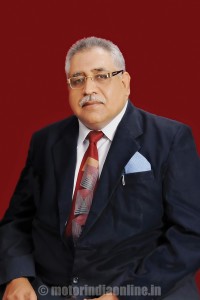Agarwal Movers is one of the most trusted and professionally-managed groups that have been contributing a lot for the growth of the economy by specifically revolutionizing the transportation and logistics sectors.

In his presentation at the Assocham’s National Conference on Goods & Services Tax (GST) in Chennai, Mr. Rajeev Khurana, Director, Agarwal Packers & Movers, said the centre has urged the states to adopt the long-delayed GST to push growth and reduce the cost for India Inc. The levies under GST are the Central excise duty, additional excise duties, service tax, additional customs duty and special additional duty of customs (SAD). The State levies are sales tax, entertainment tax, octroi & entry tax, purchases tax and luxury tax, Central sales tax, etc.
According to him, the total logistics market in India was about $75.19 billion in 2009, representing approximately 6.2 per cent of the country’s GDP. From 2009 to 2014 the CAGR rate was 9.9 per cent. In 2009, the revenue was $75.19 billion, and in 2014 it was $120.43 billion.
The World Bank estimates India’s GDP to grow by around five per cent in the current year and by seven per cent by 2016-17. Exports are expected to grow by 11 per cent in 2015-16 and 13.5 per cent by 2016-17. A study published last year by Assocham concluded that a national GST system could increase economic growth in India by 1.4-1.7 per cent with an annual revenue boost of Rs. 1.2 trillion.
Saying that GST will change the face of the Indian economy, Mr. Khurana observed that GST will cut down a large number of taxes currently imposed, leading to the creation of a unified market, which would facilitate seamless movement of goods across States.
Currently, he said, companies have to pay taxes on the entire underlying value of the product/service. However, under GST, companies in a chain will have to pay tax “destination based”. The actual tax paid will likely be smaller and reduce the incentive for evasion.
Further, GST will give credit for all taxes paid earlier in the goods/services chain incentivizing tax-paying firms to source inputs from other registered dealers. This will bring in additional revenues as the unorganized sector would also be drawn into the tax net.
Further, tax revenue will increase by about 0.2 per cent and GDP could go up by 0.9-1.7 per cent. Exports will also get a boost as fall in the cost of manufactured goods & services under GST will increase the competitiveness of Indian goods and services in the international market.
Mr. Khurana further stressed the role of trained drivers in the transportation industry. During 1982-2012, the number of drivers available per 1,000 vehicles. In 1982, 1,310 drivers available on per 1,000 vehicles, 1,000 drivers available in 1992, 890 drivers available in 2002, 750 drivers available in 2012. And in 2022, it will be at an astounding 480 drivers/1,000 trucks wherein we will need skilled/trained drivers + double drivers.
Referring to the number of deaths in road accidents during 2009-13, he said it was 1,26,896 in 2009. The figure moved up to 1,33,939 in 2010, 1,39,091 in 2011, and to 1,37,423 in 2012.
A recent survey has shown that a truck travelling from the North to South in general meets with an accident after 450 km of travelling on account of sleep deprivation: A truck driver, while on the move, is able to sleep for only 2 hours 40 minutes in a day. According to the NCRB survey in 2011, about 26,678 persons die every year in truck accidents.
The other benefits post-GST is with driver shortage hitting the industry, an unlikely benefit will be less pressure to increase the drivers. But then since higher load vehicles will be required so we will need more talented drivers.
Finally, GST implementation, a game changer reform, should be encouraged by all stake-holders, Mr. Khurana added.